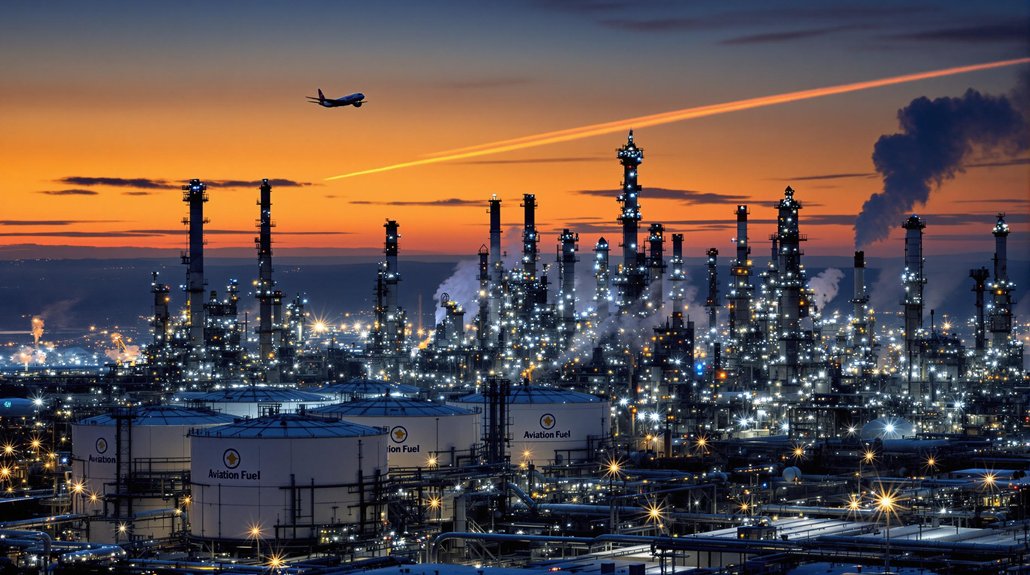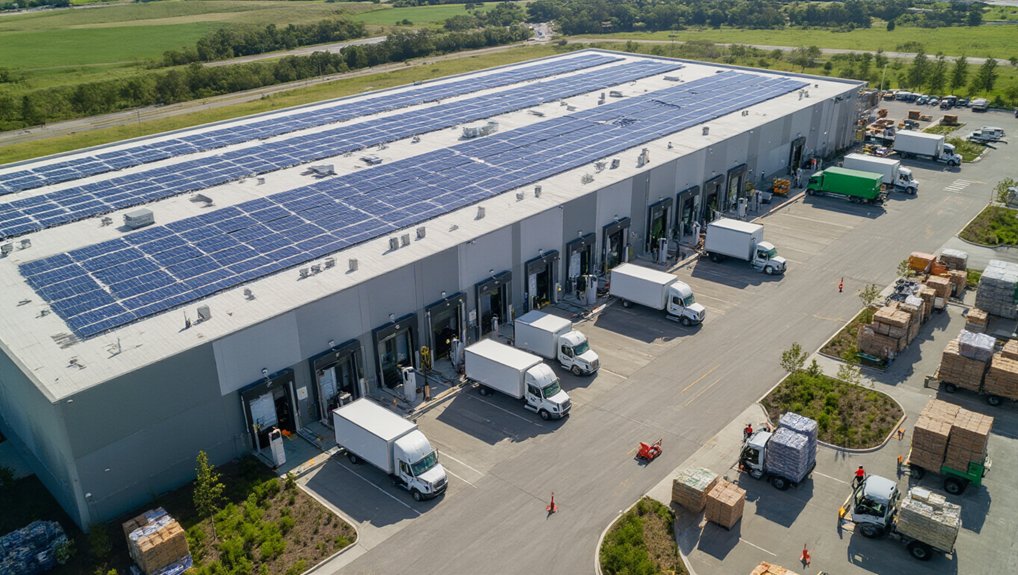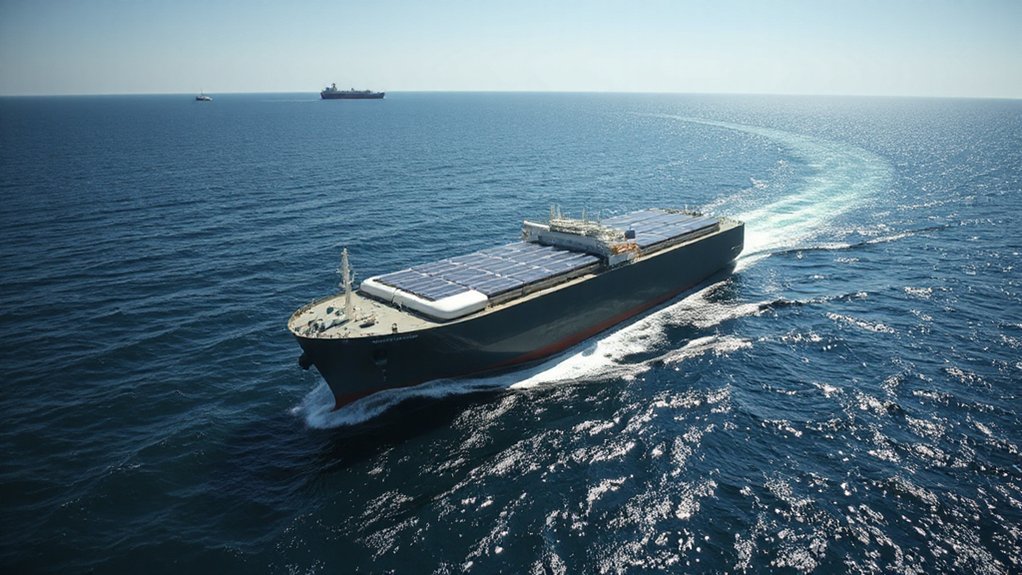U.S. refineries are pumping out jet fuel at historic levels, grabbing a record share of total petroleum output. The aviation comeback is real, folks. Major players like Exxon and Chevron dominate the market while smaller refiners scramble to keep up. Despite operational challenges and costly equipment modifications, production has surged well beyond the 2016 average of 1.6 million barrels daily. Sustainable alternatives remain a drop in the bucket compared to this high-flying trend.
Nearly every American refinery is shifting gears as jet fuel production soars to record-high shares in 2024. The aviation sector’s comeback is real, folks. After years of playing third fiddle to gasoline and distillate fuels, jet fuel is claiming a bigger slice of the refinery output pie. Not exactly a surprise when you look at those crowded airports and TSA lines stretching to infinity.
U.S. refiners are pumping out jet fuel like never before, responding to surging demand that’s expected to hit all-time highs by 2026. Remember 2016 when we averaged 1.6 million barrels per day? Those numbers look quaint now. The big five producers—Exxon Mobil, Chevron, BP, Valero, and Marathon—control about half the market. They’re making bank while smaller players scramble to keep up.
American refiners are cranking out record jet fuel volumes as demand soars, with industry giants raking in profits while smaller competitors struggle to adapt.
This production pivot isn’t as simple as flipping a switch. Refineries face hard limits on how much they can adjust their product mix. Each 42-gallon barrel of crude magically becomes about 45 gallons of petroleum products. Chemistry, am I right? Modifying equipment costs a fortune, and refiners aren’t exactly flush with spare cash these days.
The Gulf Coast remains America’s jet fuel powerhouse, with Texas and Louisiana leading the charge. Our national capacity sits at a mind-boggling 23 billion gallons annually. That’s a lot of flying.
Meanwhile, sustainable aviation fuel (SAF) is the new kid on the block. Just three commercial producers so far: World Energy, Neste, and Montana Renewables. They managed a measly 24.5 million gallons in 2023. Drop in the bucket, really.
America’s refining landscape continues changing. We’re down to 129 refineries with 18.1 million barrels of daily capacity. Six facilities shuttered in a single year. The survivors are adapting—they have to. Air travel isn’t slowing down, and jet fuel’s unprecedented rise proves it.









